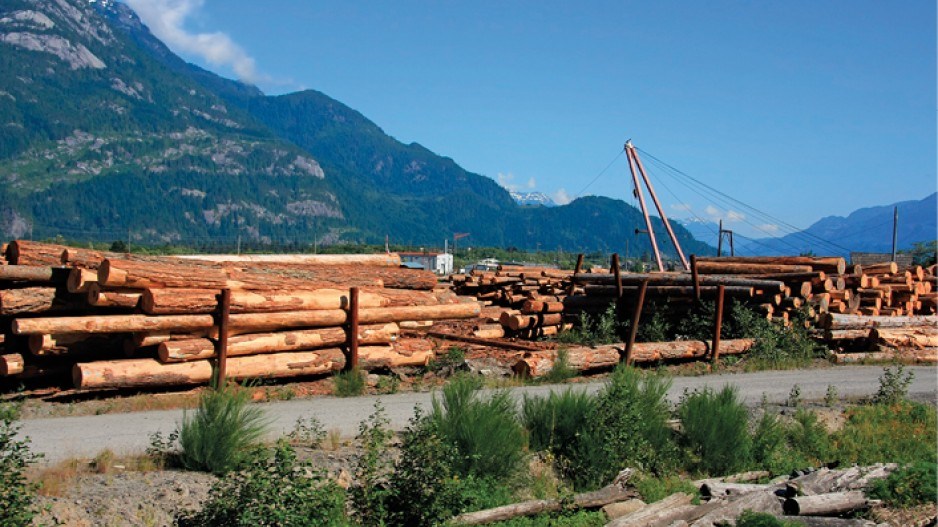As the weakening Canadian dollar and the recovering U.S. housing market push B.C.’s forestry into the black, analysts caution a turnaround in the industry could be bottlenecked by the production capacity of West Coast mills.
Forest and paper-product companies based in Western Canada posted net earnings of $48.3 million in the fourth quarter of 2013 compared with $10.6 million during the same period the year prior, according to a PricewaterhouseCoopers (PwC) report released March 24.
“We’re hinting at a Canadian turnaround, but it’s certainly not the same for everyone at this point,” PwC consulting partner Bruce McIntyre said.
He added that the lumber business has been on an uptrend while companies involved in newsprint – and, to a lesser degree, pulp – haven’t been as successful.
Richmond-based Catalyst Paper Corp. (TSX:CYT) posted a net loss of $95 million for the fourth quarter of 2013. The year before, it posted a fourth-quarter net loss of $35.2 million.
Meanwhile, net earnings for West Fraser Timber (TSX:WFT), a Vancouver business focused on lumber production, reached $118 million in the fourth quarter of 2013 compared with $20 million during the same period in 2012.
McIntyre said although the overall numbers mean there’s more room for optimism, there are still some challenges facing the forest products industry.
“We’ve had some longer-term supply constraints, particularly in B.C., given issues such as the mountain pine beetle. You’ve also got a supply constraint in that not all the mills that were producing prior to the recession have come back online.”
McIntyre said buyers could end up facing higher demand but with limited supply capacity, which will drive up prices.
But Keta Kosman, publisher of Madison’s Lumber Reporter, said data from the U.S. Department of Agriculture, Statistics Canada and Western Wood Products Association shows mills in the western United States and Canada are still operating below 90% capacity.
Kosman said people often ask her what a turnaround in the B.C. forest products industry will look like.
“I tell them you can’t really look at 2004 or whatever the last normal year was when lumber was running between the countries, because China wasn’t really a player then.”
She pointed out that in 2008-’09, just as the U.S. housing market fell apart, China began buying a reasonable volume of lumber.
“So everybody’s going to jump – especially over the next two years – to serve much of this additional 12% capacity that’s ready to come back into the U.S. while assuring those long-term buyers from China continue also to be customers.”




